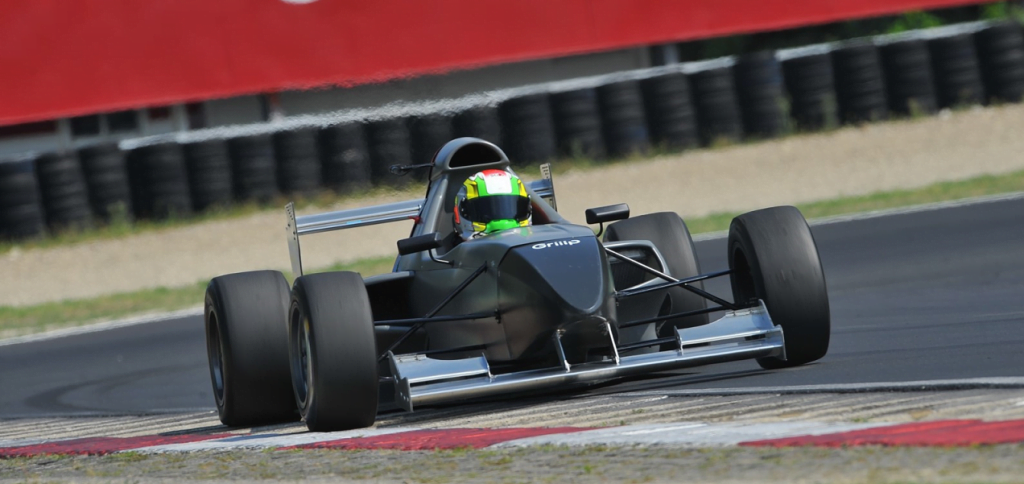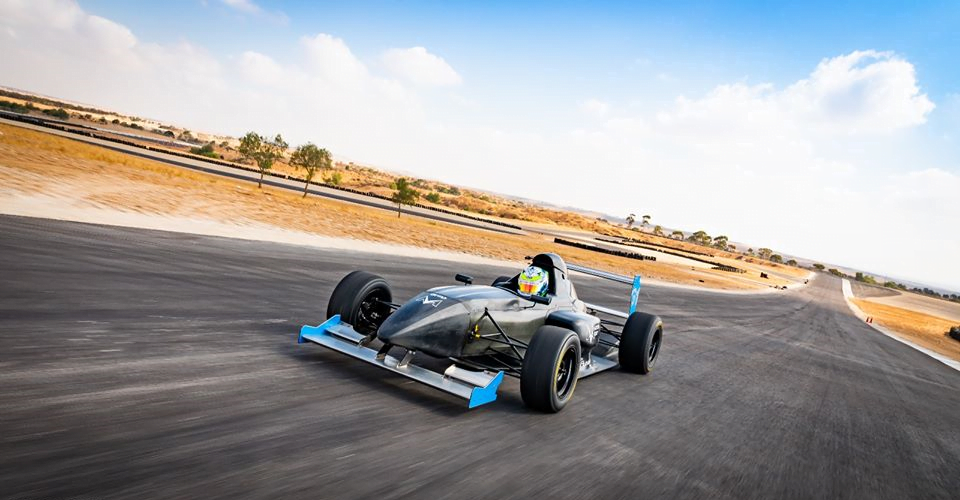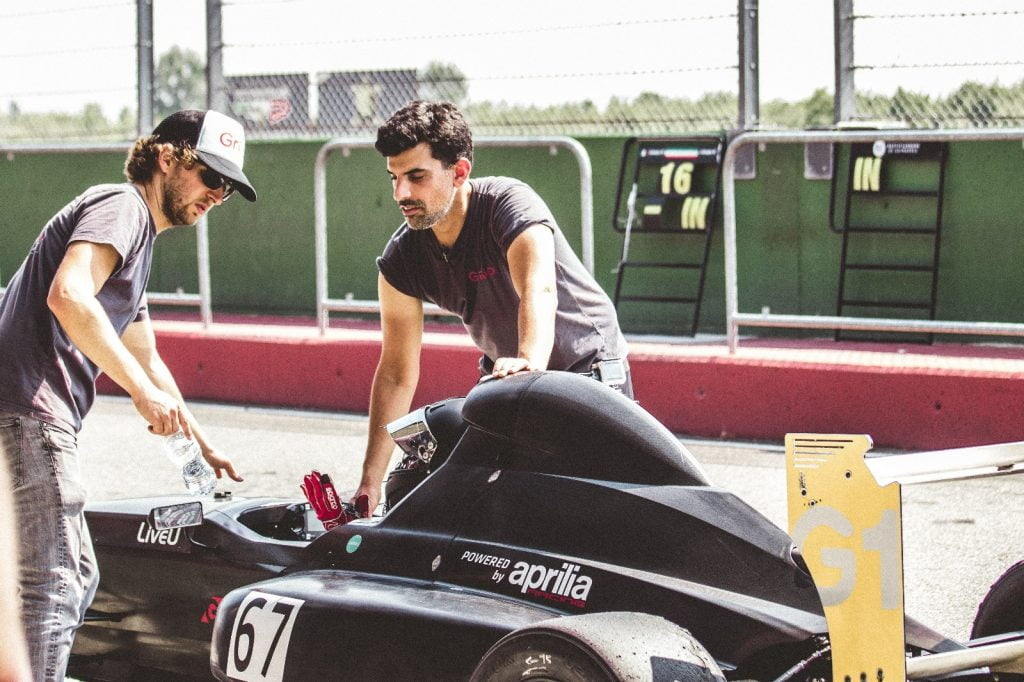Anybody who’s been to Israel and has braved the country’s roads has noticed that commuting can be something of a contact sport. Israeli motorists can be aggressive, impatient, and seem to view a merging driver as a signal to floor it. Nonetheless, while many Israeli drivers may fancy themselves amateur racecar drivers, the country has never developed a large domestic fanbase for motorsport nor has it ever had much of a local automotive industry.
While Israel is recognized as a leading world player in the autonomous vehicles and mobility markets, it is not known for car manufacturing plants or vehicle assembly lines. The two exceptions are the relatively short-lived Susita (“little horse” in Hebrew) made by Autocars in the 1970s, and the ill-fated Better Place which bankrupted in 2013.
In perhaps a sign of classic Israeli chutzpah, one company has not only manufactured a race car, it has developed a vehicle it says will revolutionize the motorsport experience globally, largely based on tech and smart design.
Griiip was founded in 2015 by Tamir Plachinsky and Gil Zakay. It released its first race car in 2016, the G1, an entry-level Formula 1000 race car powered by the Aprilia V4 1000cc engine, which the company claims is more cost effective than any other similar car because it uses a simple frame.
SEE ALSO: Tel Aviv Firm Nexar Is Expanding Its Safe Driving Tech In US Cities
The company chose Formula 1000 because it is a relatively inexpensive racing series and could accomodate small-scale manufacturers.
Plachinsky, Griiip’s CEO, tells NoCamels that the company at first “had very limited resources, both in terms of finance and knowledge, so we had to look at what is the best thing to do. We found the Formula 1000 in the US and decided to work with those regulations.”
Plachinsky told DriveTribe earlier this year that Formula 1000 “is the best entry-level category when you combine performance and costs,” and has great growth potential.
But to set itself apart amid larger and more established race car firms, Plachinsky says Griiip had to step it up, tapping into Israel’s know-how in automotive tech for its edge.
The company says it is using “the power of data to create the first smart connected race car to deliver enhanced content to fans and drivers,” and seeking to drive up interest and engagement. It developed the G1 Series, a platform it says will change the racing experience throughout the world, where “fans are given content that creates an exciting and engaging viewing experience” while “drivers are given the data they need to improve and grow.”
“Our goal is to be the number one company for motorsport consumers,” Plachinsky explains. “We’re talking about hundreds of millions of viewers. Currently, the industry faces the issue of viewer engagement. With our data technology, we want to change that.”
Recently, Griiip teamed up with American portable live video solutions company LiveU to bring live video broadcast from inside the vehicles.
Using the first-ever G1 Series race, which took place in northern Italy in mid-April, Griiip attached ultra-small LU200 portable transmission units from LiveU to its cars, while Live600 units were used for wider coverage of the event. During a race in May, users were able to select individual driver feeds streaming on the G1 Series website. Griiip also intends to use drones as well as Facebook Live to expand its coverage.
“Being able to bring these events in a dynamic way to viewers at a small fraction of the cost of traditional technologies is very exciting for us,” said Griiip CTO Gilad Agam in a statement in April. “The ability to affordably and reliably stream from each car during a race is ground-breaking. We believe that this, along with live car data and insights, will really help audience engagement and is something that will attract the attention of other motorsport series.”
The company is also harnessing advanced technology for safety. In April, Griiip announced a partnership with Israeli firm Autotalks, which develops Vehicle to Everything (V2X) communication chipsets, to equip all of its G1 race cars on the track with a solution “to eliminate a significant number of racecar accidents and casualties in professional and amateur racing.”
With Autotalks’ Vehicle to Vehicle (V2V) technology, an alert is sent off to drivers on the track when they are approaching a dangerous area – for example when another driver has lost control and has stopped somewhere unsafe, or when a vehicle slows down unexpectedly. The alert increases in intensity as the drivers get closer.
“By providing an instant, clear warning, rather than waiting for the yellow flag, horrific on-track accidents can be avoided, which often become chain accidents due to the high speeds involved,” Griiip and Autotalks said.
The technology was first demonstrated earlier this year ahead of the opening of Israel’s first regulation-size racetrack five months ago.
Sign up for our free weekly newsletter
SubscribeIsrael opens first racetrack
In a sign that the local motorsport industry is entering the fast lane, Motor City, a racetrack center that spans 800 dunams (197 acres) opened in May in Kibbutz Hatzerim, near the southern city of Beersheba.
The initial stage of the Motor City project involves a 1.36-mile circuit according to the FIA (Federation Internationale de l’Automobile) requirements for race cars up to Formula 3. Among other amenities, it will include a grandstand for 15,000 spectators and a 2,625-foot motocross track.
Motor City is set to host Israel’s first motorsport festival later this month, which is set to feature races and other events for adults and children, as well as sports bike championship later this week.
At the grand opening of the track, Griiip had Israeli racecar drivers Alon Day, an award-winning stock car racing driver, and Yarin Stern, a formula 3 racing driver, take a pair of G1s for a spin.
On your mark…get set…
Plachinsky’s interest in motorsport spans almost a decade. As an engineering student at Ben-Gurion University in 2011, he started the first Israeli team for Formula SAE (Society of Automotive Engineers), a student design and building competition for race cars. He and his team took 15th place out of 57 in an international Formula SAE arce in Italy that same year.
The competition earned him a coveted internship with Italy’s largest car manufacturing company Dallara, also the main sponsor of Formula SAE. The time with the company provided valuable experience and a tentative plan for the future.
“Those six months were amazing for me, like getting a front row seat to see the amazing motorsport industry in action,” Plachinsky told DriveTribe. “When I returned to Israel, it was clear to me that being part of this industry is something I want to do for the rest of my life,” he added.
Plachinsky saw an opportunity in Israel’s underdeveloped motorsport industry and co-founded Griiip in late 2015.
“We are not confined by traditions and dogmas about how race cars should look or how they are supposed to be operated. We can divert Israel’s advanced technology into our race cars and further impact the entire automotive industry,” he explained.
Griiip quickly wanted to tackle one of the key issues in racing: the prohibitive costs of the Formula experience. Formula 1 cars were very expensive and the price tag often deterred new drivers from entering the race. The vehicles and the team of specialists to operate them can run into a seven-to-eight figure sum per year.
To change this, Plachinsky decided to gather a team and build a car that would be a better bang for the buck. The first G1 prototype was built “in our garage,” he says. “It was a very romantic night, spent building our car.”
But building the prototype had its challenges, including tight customs regulations and a lack of a testing site as Israel had no viable racetrack at the time. So Griiip shipped off the vehicle to Italy for on-the-road testing.
After another few months of redesigning and tweaks, including picking Italian manufacturer Aprilia Racing as an engine supplier, Griiip had the G1 in hand by mid-2016. All manufacturing now takes place in northern Italy, and the G1 can be bought for €52,900 (approx. $60,175), operated by a small team.
The next series car Griiip plans to introduce is the G1 E, the electric version of the G1, following a green trend in the vehicle industry. By the end of this year, Griiip plans to have a total of five cars complete, three of which are in final production stages. The unrevealed trio “represents a new era in Griiip by being the first Formula 1000 cars to receive completely new engines,” the company says.
Related posts

Editors’ & Readers’ Choice: 10 Favorite NoCamels Articles

Forward Facing: What Does The Future Hold For Israeli High-Tech?

Impact Innovation: Israeli Startups That Could Shape Our Future






Facebook comments